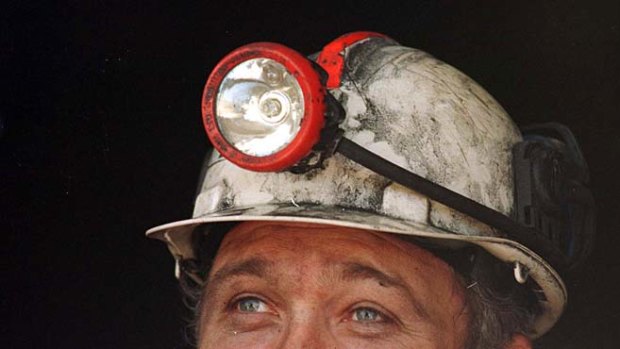Australia's employers added seven times the number of jobs expected last month, leaving the jobless rate unchanged and reducing the need for the Reserve Bank to cut interest rates again.
- New jobs jump in March
- State-by-state jobless rates
- Inflation views on the rise
- Poll: what's the jobs outlook?
- Michael Pascoe: Up arrow
- Tim Colebatch: Down arrow
Australia's unemployment rate came in at 5.2 per cent in March as the economy added 44,000 jobs for the month, according to the Australian Bureau of Statistics.

The economy is doing better than many expected.Credit: Robert Rough
Economists had expected the jobless rate to edge higher to 5.3 per cent, with just 6500 jobs added in March.
Among the states, the jobless rate jumped to 5.8 per cent in Victoria while easing to 4.8 per cent in New South Wales.
"It's very strong at face value," JPMorgan economist Ben Jarman said. "This makes life very interesting for the RBA because it's a key measure of how much slack there is in the economy."
The news sent the Australian dollar more than half a US cent higher to about $US1.036 as investors pared their expectations of an interest rate cut when the RBA meets on May 1.
"This number tells them that their indirect measures of how much slack is in the economy have not really moved," Mr Jarman said.
The extra jobs were skewed to part-time positions though, with 28,200 of such jobs added for the month. Full-time jobs rose 15,800, marking the biggest increase this year.
In the first quarter, the number of employed people jumped by 76,700, the biggest quarterly advance since the final three months of 2010, the report showed.
The chances of another interest rate cut by the RBA largely hinge on the rate of price increases in the March quarter, as singled out by the central bank last week when it left interest rates on hold. The ABS will release inflation data on April 24.
Mr Jarman said that, if there is a strong inflation number at the end of the month, the decision about any future rate cuts will come down to what sort of news occurs in global markets between now and the beginning of May.
Sideways shift?
While the March jobs figure surprised many commentators with its strength, economist such as National Australia Bank group chief economist Alan Oster cautioned about an overly optimistic reading.
"Fundamentally it's a story that says employment is going sideways," Mr Oster said.
Since 2008 the number of jobs lost in manufacturing is equal to those created in mining - about 110,000 positions, he said.
"This doesn't mean the RBA won't cut," he said. "It just means the focus becomes purely on inflation."
Since the financial year began in July, the economy has added about 50,000 jobs, roughly in line with the expansion of the labour force.
The overall jobless rate at 5.2 per cent may have dropped had not more people started looking for work last month. The participation rate - a gauge of the proportion of people looking for jobs - rose to 65.4 per cent in March from 65.2 per cent in February, the ABS said.
The number of hours worked rose 0.6 per cent in March, seasonally adjusted, easing from the 1.1 per cent rise in the previous month.
NSW leads, Victoria lags
Among the states, Victoria fared the worst last month, while New South Wales recorded renewed strength in its labour market.
In Victoria, the seasonally adjusted jobless rate jumped to 5.8 per cent in March from 5.5 per cent in February, the highest monthly figure since July 2009, during the depths of the financial crisis.
Victoria has lost about 20,000 jobs since October, ABS data showed.
Melbourne-based Mr Oster noted that the jobless rate was a full percentage point higher than New South Wales.
Although the monthly numbers were volatile, he said, the trend appeared to be for a weakening labour market in Victoria.
"We're more exposed to manufacturing and the property market is the weakest in any state," he said. "And confidence is pretty low."
In New South Wales, the unemployment rate sank to 4.8 per cent in March from 5.1 per cent in February. It was the first time the state's jobless rate has fallen below 5 per cent since May 2011.
In Western Australia, the jobless rate ticked up to 4.1 per cent in March from 3.9 per cent in February, while in fellow mining state Queensland, the unemployment rate declined to 5.5 per cent in March from 5.7 per cent in the previous month.
In South Australia, the rate was unchanged at 5.2 per cent over the two months, the ABS said.
Tasmania's jobless rate remained steady at 7 per cent, but well up from 5.5 per cent a year ago.
BusinessDay with AAP, Bloomberg